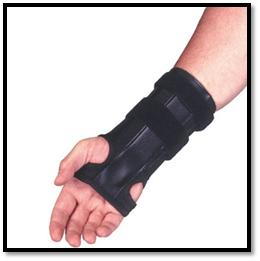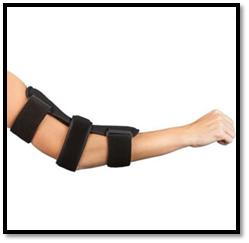
- posted: Oct. 29, 2019

Detrimental positions, postures, and activities are obstacles to healing. The average person spends about 26 years sleeping in their life which equates to 9,490 days or 227,760 hours. Spending this much time sleeping means that a person better spend that time in a proper positions. This blog will identify six condition-specific sleep faults, and recommend clear-cut solutions through modifications of the sleeping routine.
Musculoskeletal symptoms frequently surface at night. As sleep comprises one-third of our lives, this correlation deserves significant attention and patient education. When you sleep is typically also when you heal. Why not give tissue the best chance to recover during sleep?
How Does Sleep Position Affect Six Common Orthopedic Diagnoses?
1. Rotator Cuff Syndrome
Problem: “Many of us sleep with the arm in the overhead position of shoulder impingement, and this is a lifelong habit.

Over time, this may be considered a “pathological sleep position.” The long-term result of chronically impinging the rotator cuff while asleep is to fall within the continuum of chronic tendinopathy. This could hypothetically be the chronic pain generator of nocturnal pain, the seemingly “asymptomatic shoulder” and may even explain “spontaneous” rotator cuff rupture.”
Solution:
Avoid sleeping on the affected side. Consider sleeping facing up, or with the affected side up, placing a pillow between the arm and body for support and to minimize the effects of traction compression.
2. Neck Pain
Problem: Pathologic sleep positions may create or perpetuate cervical dysfunction. Neck pain is commonly associated with shoulder impingement from the side-lying sleeping posture. Similarly, pillow height can force static compression or stretch to the cervical structures, resulting in pain. Thin pillows aggravate degenerative conditions by allowing excessive extension or lateral flexion of the spine. Static cervical flexion from thicker pillows can negatively affect disc herniation related problems
Solution:
Choose a pillow that allows the neck to remain in a neutral position. Avoid excessively thick or thin pillows. Generally, feather or fiberfill pillows allow greater conformity than rigid foam.
3. Tennis Elbow
Problem:
Sleep position is a possible aggravating factor that delays the healing of an acute injury and may result in chronic pain with lateral epicondylosis. (pain in the outside of elbow). In particular, sleeping with the affected elbow beneath a pillow results in sustained compression to the wrist extensors.
Solution:
Keeping the arm at the side results in a reduction of lateral elbow pain.
4. Carpal Tunnel Syndrome
Problem:
Sleeping in a fetal position with sustained wrist flexion results in compressive ischemia to the median nerve.
Solution:
A night splint can help prevent hyper-flexion of the wrist by reducing nerve compression. Cock-up splints can prevent static flexion/compression during sleep, but patients who are susceptible to traction ischemia should avoid excessive extension. Also, avoid wearing an excessively tight brace, as this may be counterproductive to a compressive neuropathy.

5. Cubital Tunnel Syndrome
Problem:
Sleeping in a fetal position with sustained elbow flexion results in traction ischemia to the ulnar nerve.
Solution:
Limiting sustained elbow flexion will reduce ulnar nerve stretch. Utilizing a brace that prevents elbow flexion beyond 45 degrees will limit stretch to the ulnar nerve.

6. Gluteal Tendinopathy
Problem:
Gluteal tendon pain increases with positions, activities, and exercises that involve sustained or repetitive compressive loading—including sleeping. Side-lying sleeping directly compresses the lateral hip resulting in ischemia and reduced ability to heal. Similarly, sleeping on the opposite side without a pillow under the knee will traction the TFL/ITB against the greater trochanter resulting in static compression.
Solution:
Try to sleep on your back. If side lying is unavoidable, place a pillow between the knees to reduce torque on the upper hip. An eggshell mattress topper can limit compression of the underside hip. Avoid weighted blankets.
If you have any questions on how your sleeping position may be affecting you or how a Chiropractor might be able to do to help contact our office at 504-456-9296
HOURS OF OPERATION
Same Day Service
8:30 am - 6 pm
9 am - 5 pm
8:30 am - 6 pm
9 am -12 pm
8:30 am - 5 pm
9 am - 12 pm
Closed
Location
Find us on the map
Provance Chiropractic Sports & Wellness, LLC
2920 Kingman St STE 110
Metairie, LA 70006, US
(504) 456-9799
